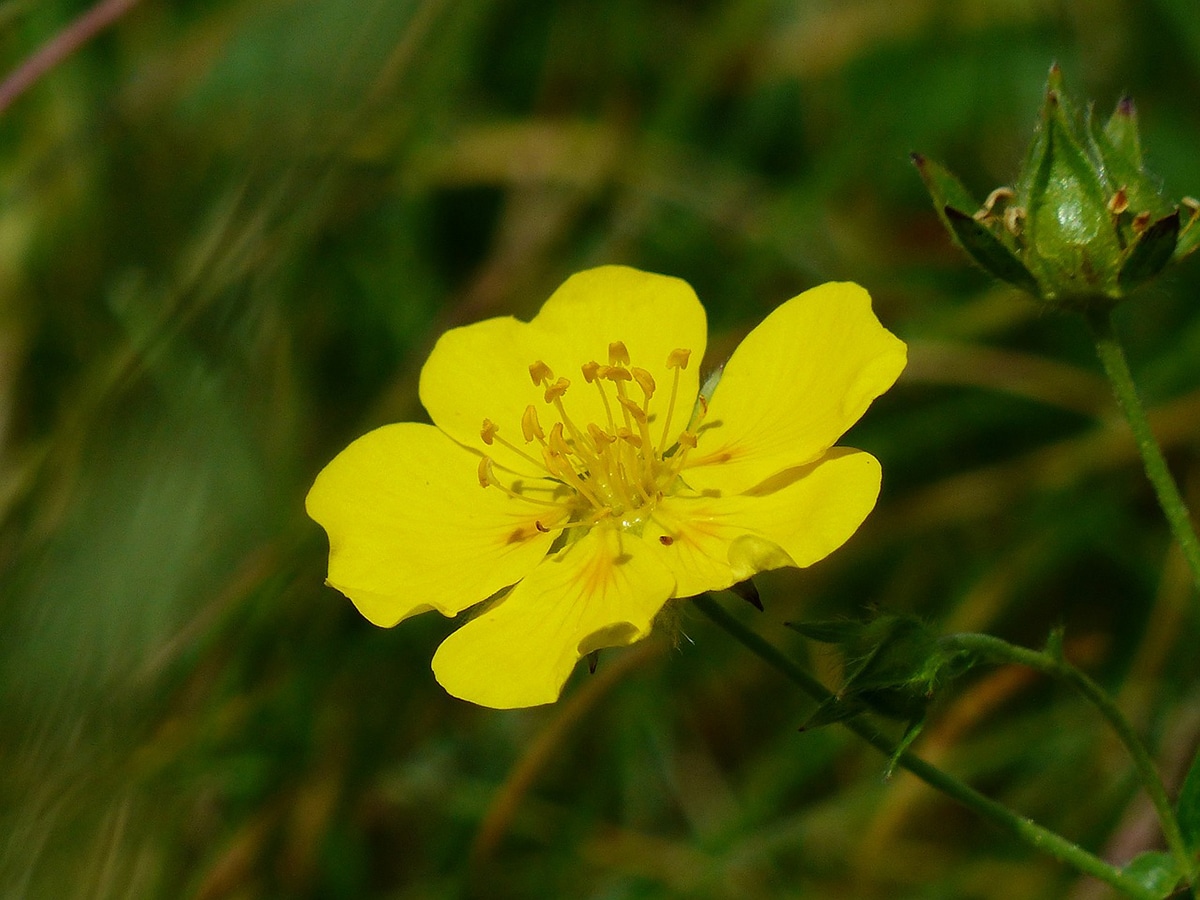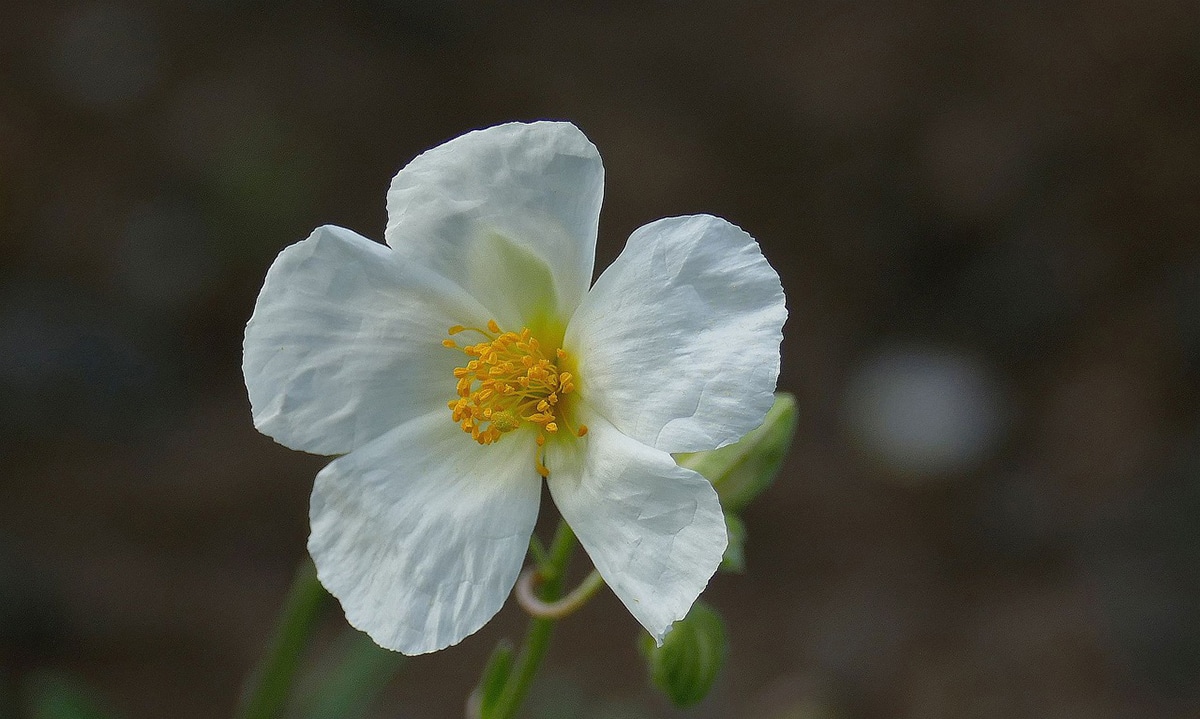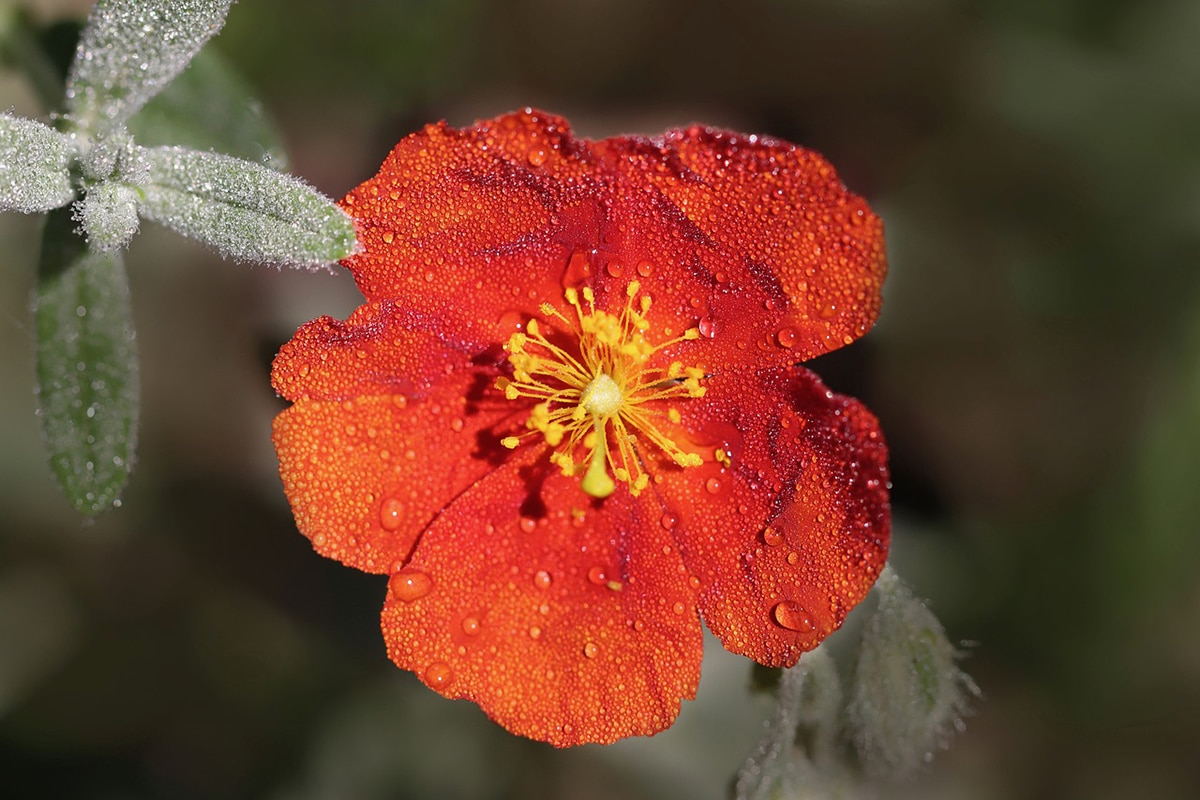
The number of flowering plants that have been identified to date is uncountable. We can find both in nature and in vegetable gardens with flowers of all colors and shapes. A very prominent genus due to its great variety of species is the helianthemum.
In this article we will explain what this genus of flowering plants is, what it looks like, what are the officially accepted species and the uses we can give it.
What is Helianthemum?

When we talk about helianthemum we refer to a genus of plants that is part of the family cistaceae. Although there are more than 500 described species, only 60 have been officially accepted. As for the rest of the varieties, it is difficult for scientists to resolve their validity due to the fact that the populations have a high variability and that frequent introgression and hybridization is very frequent. Another problem that makes it difficult to resolve its validity is the absence of material considered original for each species described.
This genus of flowering plants has a very wide distribution. We can find species of this type in America, Central Asia, Asia Minor, Europe and North Africa. Nevertheless, where the greatest diversity of this genus is found is in the Mediterranean region. Other places where we can find helianthemum in abundance it is in the Canary Islands and on the Atlantic coasts of England and France.
As for the etymology of the word, it has its origin in the Greek language. The term "helios" means "sun", while "anthemos" is translated as "flowered." They gave it this name since the flowers of these plants open only with the heat transmitted by the sun. To unfold their petals they need a minimum temperature of twenty degrees. It should also be noted that they have a positive phototropism. That is to say: They grow in the direction of the sun.
As a curiosity, it should be noted that there are some vernacular names in the Castilian language that corroborate this interpretation, such as "Mirasol". Some authors believe that its name is due to the similarity of its yellow flowers to the sun. However, there are many species of this genus whose flowers are pink, purple, orange or even white. Others argue that it is due to their predilection for sunny places.
Description
Generally, the species of helianthemum they are suffrutic plants, which means that they start to branch from the very base. Less frequently, they can also be annual or perennial shrubs or herbs. The leaves are all opposite and the upper ones alternate and stipulate on some occasions. Regarding the arrangement of the flowers, called inflorescence, sometimes it is very small or simple, and other times it is very branchy. The branches are usually ternate or geminate. Regarding the petals, there are usually five and they are usually somewhat wrinkled. The most frequent colors are yellow, orange and white. However, there are also species with pink or purple flowers, but it is less common.
Another feature to highlight is the fruit of these plants. It is found in an ellipsoidal or ovoid capsule. The seeds are devoid of raphe. As for the embryo, it is centrally located, folded over on itself and with straight cotyledons. We can also find him eccentric. In this case, it is common for it to be folded twice and with folded cotyledons.
Helianthemum species

Within this genre we can find a wide variety of accepted species. Next we will see the list of them:
- H. aegyptiacum
- H. aganae
- H. aguloi
- H. almeria
- H. alpine
- H. apenninum
- H. arenicola
- H. argenteum
- H. atriplicifolium
- H. bicknellii
- H.buschii
- Canadian H.
- H. canariense
- H. caput-felis
- H. carolinianum
- H. Chihuahuan
- H. ciscaucasicum
- H. concolor
- H. corymbosum
- H.coulteri
- H. cretaceum
- H. croceum
- H. dumosum
- H. ellipticum
- H.georgianum
- H. war
- H. glomeratum
- H. grandiflorum
- H. greenei
- H. grosii
- H. helianthemoides
- H. helianthemum
- H. kahiricum
- H. lasiocarpum
- H. lavandulifolium
- H. ledifolium
- H.lippii
- H.nashii
- H. nitidum
- H. nummularium
- H. nutans
- H. oriental
- H. ovatum
- H. papillare
- H. pergamaceum
- H. polyanthum
- H. pomeridianum
- H. pringlei
- H. propinquum
- H. pugae
- H. pyrenaicum
- H. rosmarinifolium
- H. rossmaessleri
- H. ruficommum
- H. rupifragum
- H. salicifolium
- H. sanguineum
- H. scoparium
- H. songaricum
- H. squamatum
- H. stevenii
- H. syriacum
- H. tomentosum
- H. violaceum
- H. viscarium
Helianthemum uses
Many of the species and hybrids belonging to the genus Helianthemum they are mostly used as ornamental plants. Its popularity stands out especially in rock gardens. As for the range of colors that they offer us, it is very wide. Apart from the usual colors, it also includes shades from salmon pink to dark red. In addition, they have a very long flowering period. This lasts from spring to summer. To grow these plants, it is best to plant them in full sun in well-drained soil.
I hope this article has helped you get to know the Helianthemum genus better. Apart from decorating the natural environment, they can also beautify our gardens.